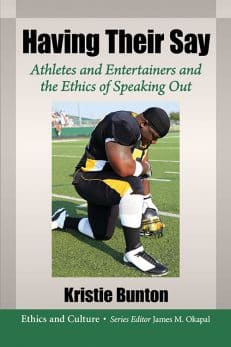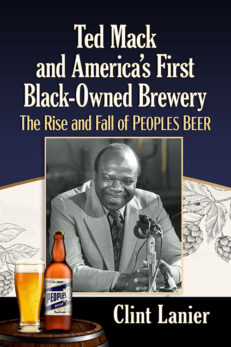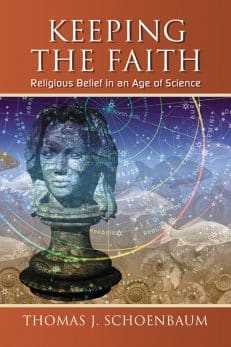Keeping the Faith
Religious Belief in an Age of Science
Original price was: $29.95.$14.99Current price is: $14.99.
In stock
About the Book
This book explores the modern relationship between religion and science, highlighting the public backlash over teaching evolution in U.S. public schools as an example of the conflict between religious faith and scientific reason. The author explores the middle ground between the two most extreme arguments, arguing that it is possible for science and religion to exist in harmony. The book also provides an analysis of 10 world religions, including Christianity, Islam, Judaism, Hinduism, and Buddhism, revealing how each finds compatibility with differing religions and scientific doctrine.
About the Author(s)
Bibliographic Details
Thomas J. Schoenbaum
Format: softcover (6 x 9)
Pages: 218
Bibliographic Info: notes, bibliography, index
Copyright Date: 2008
pISBN: 978-0-7864-3173-1
eISBN: 978-1-4766-1074-0
Imprint: McFarland
Table of Contents
Preface 1
1. The Controversy Between Science and Religion 7
2. Creationism and the Constitution 12
The Cultural Wars of Religion 12
The Scopes Case 13
Evolution Eclipsed 14
Science Makes a Comeback 14
Equal Time for Creation Science 15
Enter Intelligent Design 18
A Fundamental Flaw 20
3. The World of Science 23
Categories of Reality 23
The Scientific Method 26
Classical Physics 28
Energy and Force 31
1. HEAT 31
2. ELECTRICITY AND MAGNETISM 32
3. LIGHT 33
4. SCIENTIFIC MATERIALISM 35
A New Frame of Reference: Relativity 35
1. SPECIAL RELATIVITY 36
2. GENERAL RELATIVITY 37
Another Frame of Reference: The Very Small 38
1. ATOMS AND MOLECULES 38
2. CHEMISTRY COMES OF AGE 40
3. ATOMIC PHYSICS 42
The Quantum Revolution 43
1. QUANTUM MECHANICS 43
2. QUANTUM ELECTRODYNAMICS 45
3. QUANTUM CHROMODYNAMICS 46
Astronomy 50
1. STARS 50
2. GALAXIES 51
3. COSMOLOGY 52
Theories of the Earth 53
The Life Sciences 55
1. THE BIRTH OF BIOLOGY 55
2. DARWINISM 58
3. THE DESCENT OF MAN 62
Scientific Truth: An Evaluation 64
4. The World of Religion 71
What Is Religion? 71
Religious Knowledge 72
Homo Religiosus 73
Mythic Discourse 73
Ritual, Community and Culture 74
Sacred Places 75
Science and Religion: Independence or Conflict? 75
How Science Influences Religion: Four Paradigms 77
1. DANTE’S MEDIEVAL SYNTHESIS 78
2. DEISM 79
3. DESIGN AND THE WORLD SOUL 80
4. THE TRIUMPH OF RANDOMNESS AND CHANCE 81
Lessons from Science about Religion 85
Mysterium Tremendum: Our A Priori Knowledge of the Holy 88
The Necessity to Choose 90
1. NIETZSCHE 91
2. KIERKEGAARD 92
Religion and Faith: Is There a Difference? 92
Mystical Experiences 93
The Quest for God: The Content of Religious Belief 94
1. HINDUISM 95
2. JUDAISM 98
3. ZOROASTRIANISM 101
4. JAINISM 103
5. BUDDHISM 104
6. RELIGIONS OF CHINA 107
7. RELIGIONS OF JAPAN 110
8. CHRISTIANITY 115
9. ISLAM 119
10. SIKHISM 122
Some Problems of Religious Pluralism 123
Religious Freedom 126
1. FREE EXERCISE OF RELIGION 126
2. ESTABLISHMENT OF RELIGION 128
Summing Up: Final Thoughts about Religious Knowledge 130
5. The World of Philosophy 135
The Importance of Philosophy 135
The Limits of Knowledge 136
Intelligent Design: Rational Arguments for the Existence of God 138
1. COSMOLOGICAL PROOFS 138
2. TELEOLOGICAL PROOFS 139
3. THE ONTOLOGICAL ARGUMENT 141
A New Idea of God 141
Expressing the Transcendent 144
1. MYTH 145
2. ANALOGY 146
3. SYMBOLISM 146
4. HERMENEUTICS 147
The Genesis Creation Story 148
The Mystery of Existence 150
Ethics: How We Should Live 151
Ethics and Religion 151
Systems of Ethics 153
A Better Alternative: Virtue Ethics 156
Practical Reason and Objective Goods 160
Existentialism 161
Summing Up 162
6. Faith and Reason 167
Setting the Stage 167
Pope Benedict XVI and Islam 167
Critical Evaluation of Religion 170
Religion and Values 172
Theories of Right Action 175
Religion and Violence 177
Suppression of Minorities 179
The Status of Women 179
Religion and Law 181
The Concept of Law 183
Three Conceptions of Law 184
Which Is Best? 186
The Function of Law 187
The Constraint of Natural Law 187
Enter Positivism 188
A New Concept of Natural Law 190
Summing Up 193
Concluding Remarks 197
Bibliography 203
Index 205





